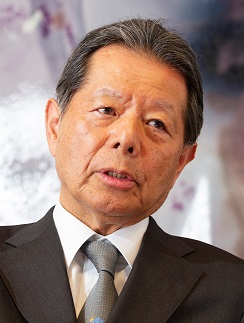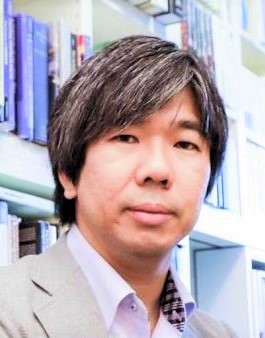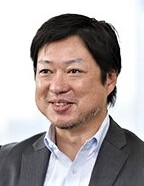“API Geoeconomic Briefing” is a weekly analysis of significant geopolitical and geoeconomic developments in the post-pandemic world. The briefing is written by experts at Asia Pacific Initiative (API) and includes an assessment of burgeoning trends in international politics and economics and the possible impact on Japan’s national interests and strategic response. (Editor-in-chief: Dr. HOSOYA Yuichi, Research Director, API & Professor, Faculty of Law, Keio University)
This article was posted to the Japan Times on May 25, 2021:
API Geoeconomic Briefing
May 25, 2021
How Japan can avoid losing out on the world stage
|
FUNABASHI Yoichi, |
HOSOYA Yuichi, |
JIMBO Ken |
In the last installment of a three-part series, executives at the Asia Pacific Initiative — Chairman Yoichi Funabashi, Research Director Yuichi Hosoya and Ken Jimbo, executive director for the Japan-U.S. Military Statesmen Forum — discuss how the international order involving the U.S. and China has evolved over the years, and the policies that Japan should adopt.
KJ: The two years between 2018 and when Shinzo Abe resigned as prime minister last year were the golden age of Japan’s diplomacy.
As the strategic competition between the U.S. and China intensified under the administration of former U.S. President Donald Trump, Tokyo strengthened the U.S.-Japan alliance and, at the same time, markedly improved its relationship with China.
It was a golden age for Japan because Tokyo pursued optimal relations with both Washington and Beijing, while neither tried to drive a wedge between the other pair. Tokyo’s balancing act stands out in comparison with the cases of South Korea and Australia, which both experienced a deterioration in relations with China at the same time as they upgraded their alignment with the U.S.
Building good relations with both the U.S. and China simultaneously — a rare case worldwide — provided a platform for Japan to display leadership in the international community.
For instance, Japan hosted the Group of 20 summit meeting in Osaka in 2019 at a time when the framework was threatened by the Trump administration’s distrust of multilateralism and confrontation with China.
But Japan skillfully and successfully led the meeting and put together G20 consensus documents on such sectors as infrastructure investment, finance, insurance and data trading.
Japan’s diplomatic coordination at the time was staggering, considering that little was achieved at the Group of Seven summit meeting hosted by France in Biarritz later that year.
Japan’s balancing act could have hit a higher peak if Chinese President Xi Jinping’s visit to Tokyo had taken place in the spring of 2020 as scheduled.
With the COVID-19 outbreak, however, diplomatic events were postponed and various issues began to emerge, including democratic backsliding in Hong Kong, human rights abuses against Uyghurs in China’s Xinjiang region and rising maritime security tensions with China’s coast guard law taking effect.
A little more than a year since postponing Xi’s visit, it became increasingly difficult for Japan to make both diplomatic wheels — the U.S. policies and the China policies — run in parallel.
U.S. President Joe Biden’s administration inherited the Trump administration’s policy of competing against China and boosted the policy by adding human rights issues. It has become unlikely for the U.S. and China to draw up a road map toward coexistence except for in areas such as climate change.
As Japan loses the strategic space it created during its golden age, there is no room for the nation to allow its diplomacy to be on autopilot.
There will be a growing need for Japan to coordinate its interests with the U.S., especially when the U.S. is trying to be more strategic in protecting emerging technologies and regulating supply chains while Japan hopes to benefit from China’s economic growth.
Economic security strategy
From now on, Japan needs to put forward a highly strategic economic security policy while advocating the principles of free trade, including freedom, fairness, nondiscrimination and open markets.
The ruling Liberal Democratic Party’s strategic task force for creating a new international order is working to formulate a strategy on economic security, but deeper discussions on this issue should be conducted across industry, government and academia.
An economic security strategy needs to pursue not only defensive policies, such as trade control and inward investment control, but also offensive ones, including industrial policies and international cooperation.
But it would be no use in implementing economic security policies if they resulted in important industrial sectors losing their international competitiveness.
It is necessary first to strengthen risk management of Japan’s key industrial sectors. For example, there will be an increasing need for companies that make profits in both the U.S. and China to take such risk control measures as splitting off businesses in the two countries.
It is also important to strengthen the industrial foundation and shift away from depending excessively on certain countries.
At the same time, it is essential to expand Japanese technologies that are indispensable for industries in other countries.
In manufacturing semiconductors, for instance, there is a process where Japanese companies’ technologies needs to be used. It is important to consider such technologies as strategically essential.
The point is to be on the defensive by avoiding excessive reliance on other economies while being on the offensive by controlling other countries’ dependence on Japan.
This is an era in which geoeconomics play an important role in the field of national security.
When coming up with a national security strategy in terms of both military and the economy, Japan should build a solid organization to respond to such needs.
Specifically speaking, Japan lacks an organization that serves as a control tower for economic security.
Just as a national security strategy is indispensable for a nation, an economic security strategy must also be indispensable.
The National Security Secretariat under the Cabinet Secretariat has an economics division, but it should be given stronger authority to become a body that oversees geoeconomic strategies.
Japan should also create an intelligence agency focused on economic and trade issues to quickly grasp what is happening in Washington and Beijing and prepare for possible situations.
Japan-U.S. friction
YF: Japan’s strategy should be to give substance to the Free and Open Indo-Pacific concept and build a framework to advocate for it with the cooperation of the “Quad” countries — Japan, the U.S., Australia and India.
To realize this goal, it is necessary to clarify how the countries can coordinate policies and divide tasks among themselves.
In doing so, Japan and the U.S. will have to aim at stepping up their alliance, which will become the core and foundation of the framework, by thinking about how to maintain, develop and manage the relationship.
The Japan-U.S. alliance has faced many challenges: the Nixon shock and the oil crisis in the 1970s; the so-called Toshiba-COCOM affair in the 1980s, in which a Toshiba Corp. subsidiary illegally exported machines used to make screws for submarines to the Soviet Union, in violation of the Coordinating Committee for Multilateral Export Controls agreement; the Gulf crisis and the Gulf War in the early 1990s; a proposal made by then-Prime Minister Yukio Hatoyama of the Democratic Party of Japan in the 2000s to create an “East Asian community”; and the Fukushima No. 1 nuclear power plant disaster in 2011.
The abrupt announcement of then-U.S. President Richard Nixon’s planned visit to China in 1972 came as a shock to Japan because it was not notified of the decision in advance and was left out of the diplomatic process.
Behind Nixon’s move was his strong distrust toward then-Prime Minister Eisaku Sato, who failed to fulfill his promise to limit Japan’s U.S.-bound textile exports in a way that satisfied Washington.
As for the Toshiba-COCOM affair, the U.S. harshly criticized the fact that a company in Japan — a U.S. ally — secretly sold technology to the Soviet Union.
During the Gulf War, then-U.S. President George H. W. Bush’s administration urged Japan to “show the flag” by sending troops to Iraq as a member of the multinational coalition, amid criticism that Japan was getting a free ride in terms of national security.
Hatoyama’s “East Asian community” initiative gave then-U.S. President Barack Obama’s administration the impression that Japan was secretly joining hands with other Asian leaders to achieve Asianism without the U.S.
At the time of the Fukushima No. 1 nuclear plant disaster, Washington questioned Tokyo’s ability to handle a natural crisis.
Amid the growing threat of contingencies in areas such as the Senkaku Islands, Taiwan and the Korean Peninsula, as well as geoeconomic competition with China, how to steer the Japan-U.S. alliance will be key in determining whether the two nations can overcome the crisis or not.
Japan should bear in mind the risks of being left out, breaking promises, secret bargaining, receiving a free ride over national security, creating an Asia without the U.S. and lacking the ability to act responsibly.
The nation should be aware that the Japan-U.S. alliance is likely to face headwinds coming from different parts of the world now even more than before.
One concern is China’s stronger pressure to divide Japan and the U.S. It is clear that China is hoping the alliance will wither.
From China’s viewpoint, frameworks like NATO and the Japan-U.S. alliance are leftovers of the Cold War — destabilizing factors in the international community and a tool to protect Western nations’ vested interests.
China regards Japan, the U.S. and Europe as minorities within global society, including the United Nations, while viewing itself and developing nations as the majority, and is intentionally attempting to create conflict between the two sides.
A stable alliance is vital
On the other hand, Japan and the U.S. believe that the Japan-U.S. alliance and NATO comprise the defense foundation that supported the free and open international order after World War II as well as international public goods for stability and deterrence.
We have to recognize that there are fundamental differences in how the issue is seen by the U.S. and Japan and how it is seen by China.
When Nixon visited China, for example, amid rising tensions between China and the Soviet Union, the U.S. could present to China the benefits of the Japan-U.S. alliance by saying it could work as a united front against the Soviet Union or as a “cap in the bottle” to prevent Japan’s militarism from rising again.
Such explanations no longer work.
China recently started calling Japan the U.S.’ “running dog” under the alliance, reviving the term used to describe U.S. allies, including Japan, during the period after then-Prime Minister Nobusuke Kishi signed the new Japan-U.S. security treaty in 1960.
It is crucial that Japan and the U.S. show China that their alliance is solid. They should aim at creating a trilateral relationship between Tokyo, Washington and Beijing in which stable Japan-U.S. relations lead to stable Japan-China and U.S.-China relations.
In other words, they should flexibly maintain deterrence against China and make China understand this goal.
Another concern is Washington’s domestic politics.
The great divide created in the United States’ economy and society during the Trump era can have an adverse effect on how the nation views the world, its foreign policy and how it gets involved in overseas affairs.
Biden decided to pull all troops out of Afghanistan, declaring “it is time to end the forever war.” The war, ongoing since 2001, was apparently what made the U.S. get tired of intervening in foreign affairs.
But it will not be easy for the U.S. to withdraw from Afghanistan, reduce excessive intervention in the Middle East and make a strategic pivot to the Indo-Pacific region by rebalancing its interests and resources.
Biden’s “foreign policy for the middle class” is nothing but the U.S.’ policy of self-reliance, namely a trade and economic security policy backed by protectionist industrial policy, and it is unlikely that the U.S. will join the Comprehensive and Progressive Agreement for Trans-Pacific Partnership (CPTPP) in the near future.
Washington has shown willingness to return to multilateral frameworks in the Indo-Pacific region and is advocating for foreign policy built on shared values such as human rights, indicating a direction toward the country regaining leadership.
But the Biden administration’s stance of leaning into human rights and climate change appears very much to be aimed at appealing to supporters domestically.
When it comes to the long-term strategy of competitively coexisting with China, it looks like the Biden administration is yet to draw up ways on how to handle these issues in a format that can win American citizens’ support.
Taiwan and the Senkakus
Taiwan could also be a destabilizing factor in the Japan-U.S. relations.
It appears that we are entering an era in which a contingency in the Taiwan Strait could occur in close connection and resonance with conflict over the Senkaku Islands.
The U.S. is beginning to feel a sense of crisis that Taiwan could become the first of a falling row of dominoes and Japan shares the feeling of urgency.
If that happened, the U.S. would no longer be able to keep its stature as a regional power in the western Pacific nor maintain the Japan-U.S. alliance in its current form, and Japan’s sea lane defense would be shaken to its foundations.
It will become necessary for the Japan-U.S. alliance to prepare for a contingency in Taiwan by rearranging forces, reorganizing bases and formulating contingency plans.
To avoid such a situation, Japan and the U.S. must cooperate to bolster deterrence against China.
At the same time, Japan should clearly present to the U.S. what it can and cannot do.
In principle, they should share the understanding that Japan will take the lead in defense and deterrence in relation to the Senkaku Islands and the U.S. will lead such moves in Taiwan.
YH: Since the middle of the 1930s, when fascism was on the rise and the international order underwent change, Japan sided with the fascist powers and was engaged in war against the U.S. and the U.K., misjudging the tide and causing great damage to national interests.
Then Japan failed once again to respond properly to structural change in the international order following the end of the Cold War.
The nation couldn’t get out of the Cold War way of thinking and continued to rely on its alliance with the U.S., trying to believe that intentionally avoiding any military action constitutes peace.
The situation changed as Japan expanded its scope of international peace cooperation activities in 1992, starting with the dispatch of Self-Defense Forces personnel to United Nations peacekeeping operations in Cambodia, eventually leading to new security laws taking effect under the Abe administration.
It took Japan more than two decades after the end of the Cold War to get that far.
History shows that Japan had been “a loser” both before and after World War II, having been unable to respond quickly and appropriately to major changes in the international order.
Japan was quick to respond to crises before the war but its decision was not appropriate, and the nation was far too slow to deal with postwar crises.
Pacifist illusions
I think Japan should take into account two key points in dealing with massive structural changes in the international order that are currently taking place and are expected to accelerate.
One is to shift away from postwar pacifist illusions and the other is to put together a comprehensive strategy that covers pressing issues, including national security, the economy, climate change and digitalization.
After World War II, Japan adopted pacifism that established a clear distinction between peacetime and wartime, and has behaved as if there is no such thing as wartime for the country since it renounced war under Article 9 of the Constitution.
But needless to say, it is not possible in reality to clearly distinguish between peacetime and wartime, as so-called gray zone situations constantly occur in international relations.
Moreover, a nation cannot maintain peacetime conditions just through its own intentions, because if it is attacked by another nation, the situation will change immediately.
Japan’s postwar pacifism was an illusion based on ignorance of important international crises around itself.
Japan needs to move away from such distorted pacifism and properly acknowledge the current situation, in which the U.S. and China are engaging in an economic war.
The Japanese government should also be prepared to quickly and appropriately respond to gray zone situations in which peacetime and wartime conditions are intertwined.
In order to do so, it is necessary for Japan to map out a variety of strategies in addition to a national security strategy on such issues as the economy, climate change, digitalization and, most urgently, obtaining COVID-19 vaccines.
In doing that, instead of coming up with these strategies separately, Japan needs to create an integrated review, like the one the U.K. government recently released.
It will not be easy to do so, but Japan should have a sense of crisis, knowing that if it fails to respond properly to drastic structural changes taking place in the international order, it will become “a loser” in international rivalry again, its global presence will decline, its national interests will be hurt and it will lose the wealth it accumulated over the years.
Disclaimer:
The views expressed in this API Geoeconomic Briefing do not necessarily reflect those of the API, the API Institute of Geoeconomic Studies or any other organizations to which the author belongs.
 APIニュースレター 登録
APIニュースレター 登録

